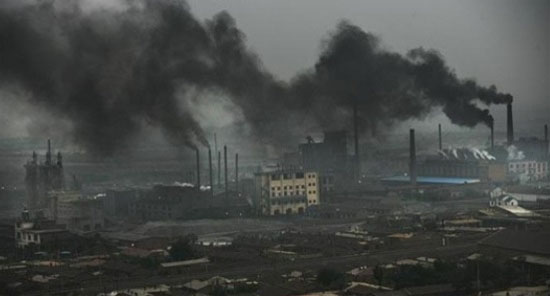
The Elwha River, which courses through northwest Washington state’s Olympic Peninsula, once hosted enormous runs of chinook and red salmon. But that came to an end in 1913 with the ...
The Elwha River, which courses through northwest Washington state’s Olympic Peninsula, once hosted enormous runs of chinook and red salmon. But that came to an end in 1913 with the building of the Elwha River dam, which produced plentiful electricity for the region but which also wasn’t equipped with fish ladders, devices that allow the animals to surpass dams. As a result, salmon could no longer swim from the Strait of Juan de Fuca, which connects with the Pacific Ocean, and breed in the river.
“There's nothing more painful than to see red salmon banging up against the dam, which is what you saw when you went there,” said Interior Secretary Sally Jewell, at the annual meeting of the Society of Environmental Journalists in New Orleans on September 5, 2014.
Another 210-foot-tall structure, the Glines Canyon dam, was built upriver in 1927.
Newsweek Magazine is Back In Print
Native people, such as the Lower Elwha Klallam tribe, protested that the dam had destroyed a way of life. For a long time, though, nothing could be done about it.
Now, everything has changed. As the twentieth century dragged on, the relative contribution of electricity from the dams declined, and support for the dam’s removal gained steam. So much, in fact, that Congress approved a removal in 1992. Years of negotiations between the Lower Elwha Klallam tribe, the city of Port Angeles, Wash., the National Park Service and others led to a finalized a plan in 2004, and work began in 2011 to remove both dams.
Finally, the world’s largest dam removal is all but complete, and for the first time in a century, the Elwha River is running free.
In late August, workers exploded the last remaining section of Glines Canyon Dam; the downstream Elwha River dam was removed in March 2012. Now crews are removing these final bits of rubble from the flowing water, a project that should be completed this month.
It’s enough “to bring tears to your eyes,” said Interior Secretary Jewell. “It's just extraordinary.”
“It’s a good day. It was the last spot [blocking the] fish access to the rest of the river,” said Robert Ellefson, with the Lower Elwha Klallam tribe. “It has been the dream of tribal members for a hundred years,” Ellefson told the Peninsula Daily News.
The project, which cost about $325 million, should allow chinook and red (or sockeye) salmon to return to the river.
The project has already had some positive effects. For the first time in a century, two bullhead trout were recorded upstream from the Glines dam. And last year, scientists counted record numbers of chinook salmon beyond where the Elwha River dam once stood.
With the dams out of the way, sediment is also returning once again to the Strait of Juan de Fuca, where the river empties. Bare rock has been replaced with sand where fish can lay eggs, and the new beaches are already providing an environment where various species can more effectively reproduce. This summer, candlefish and Dungeness crab, for example, were reported in the estuary for the first time in decades, the AP reported.
Already several millions cubic yards of sediment have been released from the lakes that formed upstream from the dams many years ago. In those now-dry lakes beds, native vegetation such as alder and cottonwood have begun growing.
“It goes against my deepest notions of how fast ecosystem recovery can possibly happen,” Christopher Tonra, a research fellow with the Smithsonian Migratory Bird Center in Washington, D.C., told the Seattle Times. Tonra is studying how the dam removal affects numbers of native birds, which have already appeared to benefit by the return of salmon, whose eggs they eat. “We are all trained, as biologists, to think of things over the long run. I am not saying the Elwha is fully recovered. But it is so mind blowing to me, the numbers of fish, and seeing the birds respond immediately to the salmon being there. It makes the hairs on the back of my neck stand up.”
Secretary Jewell said that the project made sense, as the dams produced little hydropower and the benefits of re-establishing salmon habitat were huge. She said other dam removal projects could and should go forward in similar situations elsewhere, as long as the money can be raised, although she acknowledged that may be difficult.
“I wouldn’t say there isn't industry opposition across the board, I think there's a lot of support,” she said, when asked if the hydropower industry resisted change. “But it becomes a question of money. And that's something we all have to work together on.”
Here is a time-lapse video of the Glines Canyon and Elwha dams being removed.
Source: newsweek.com






.jpg)


